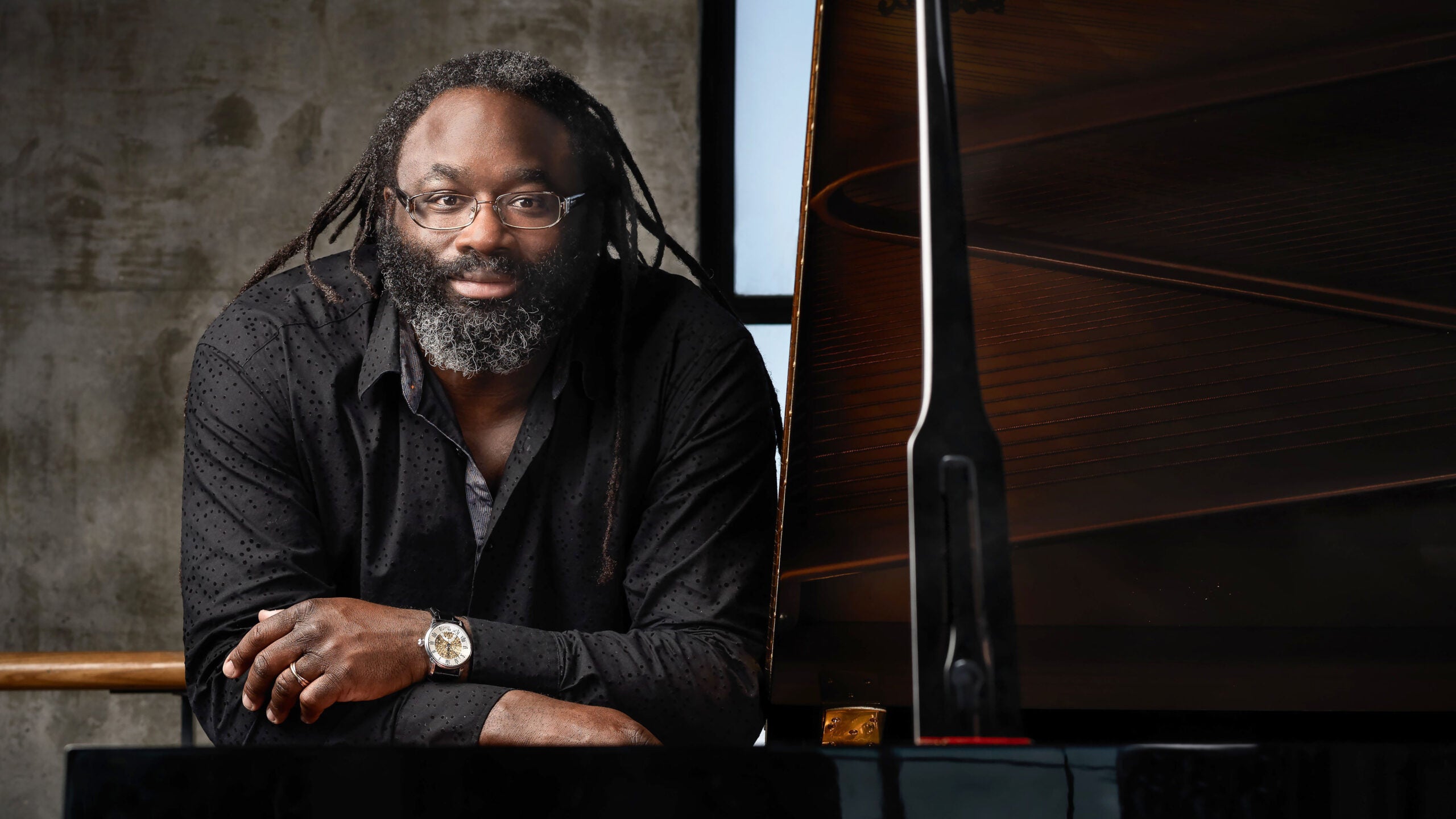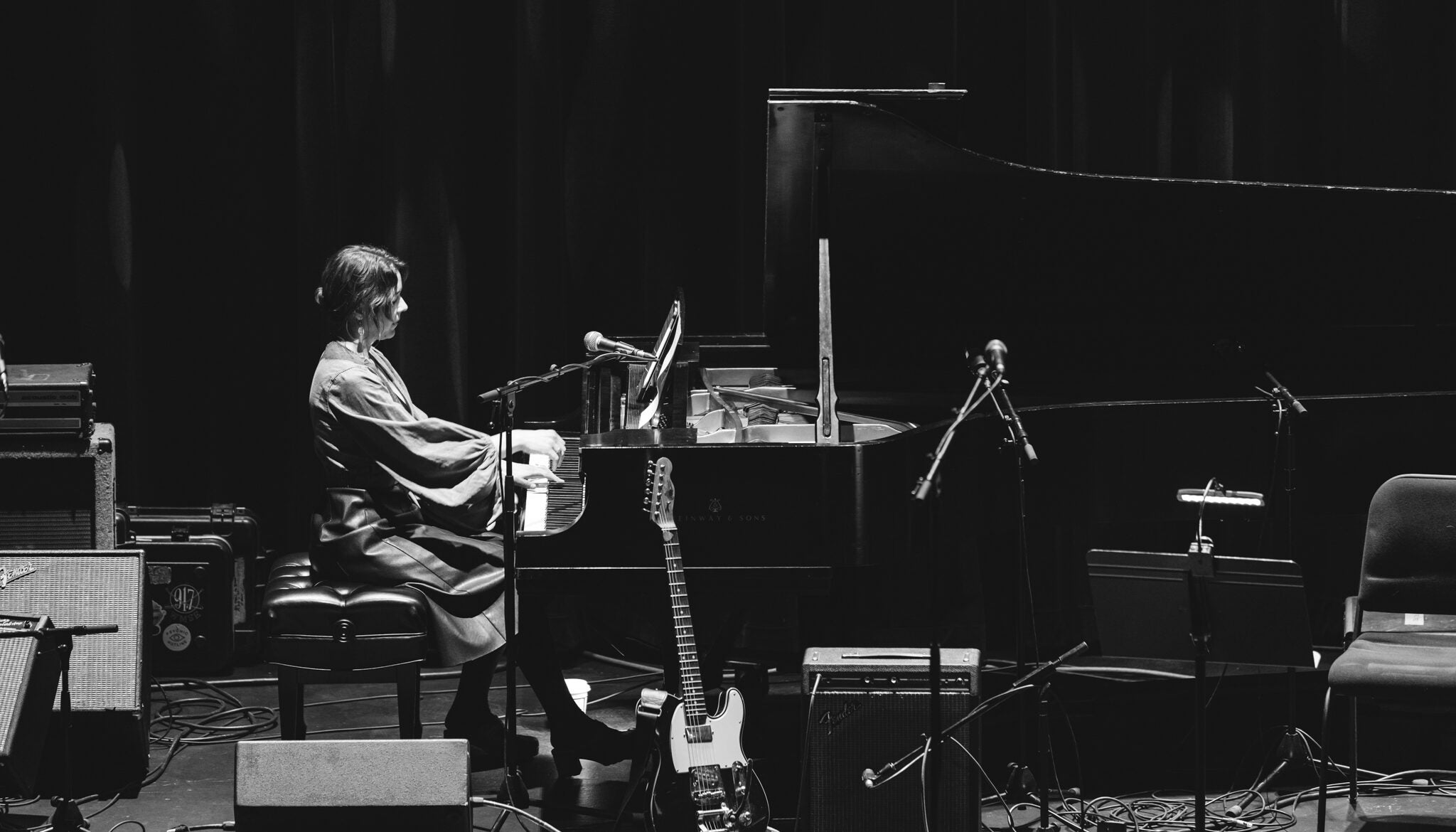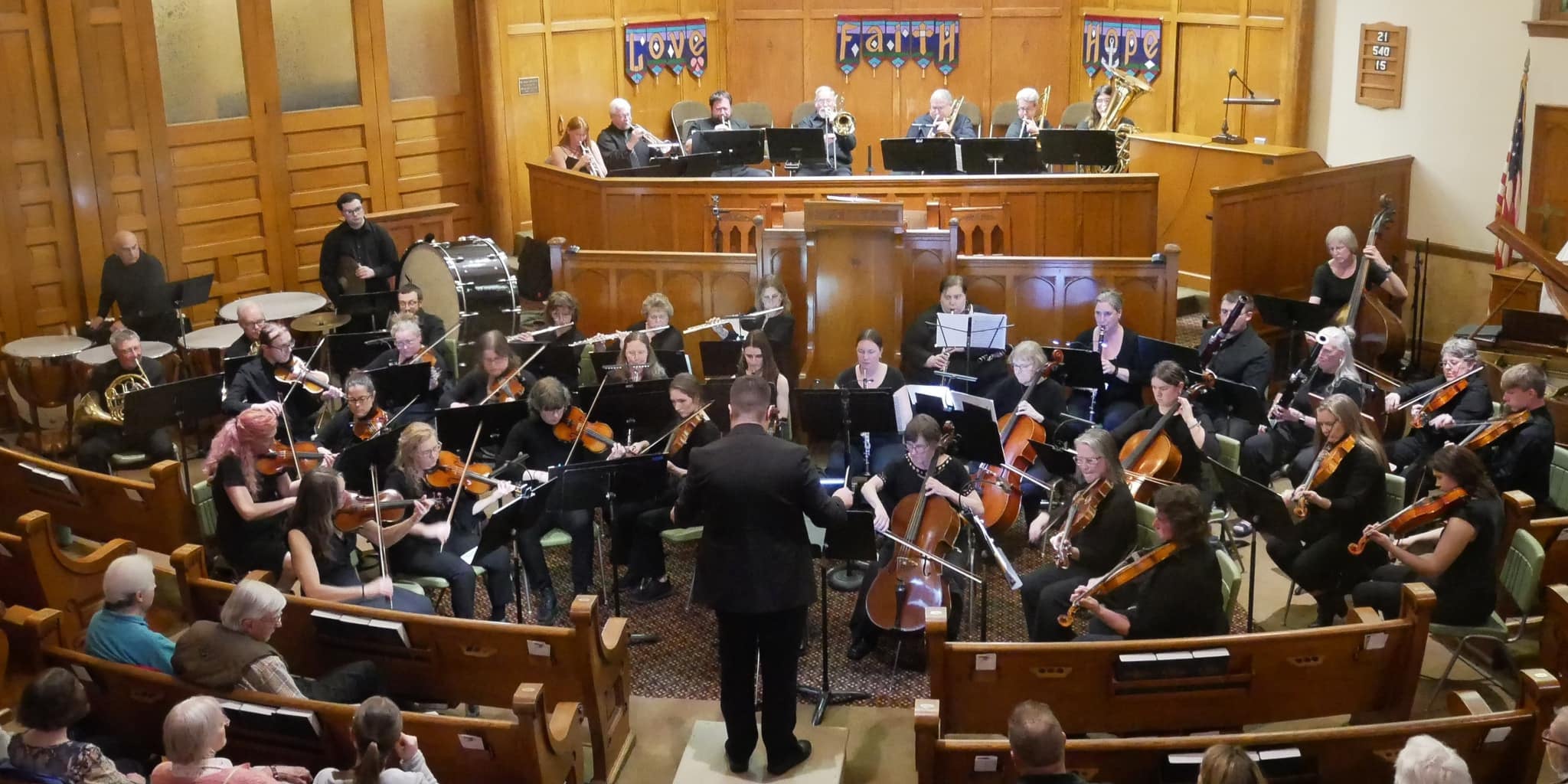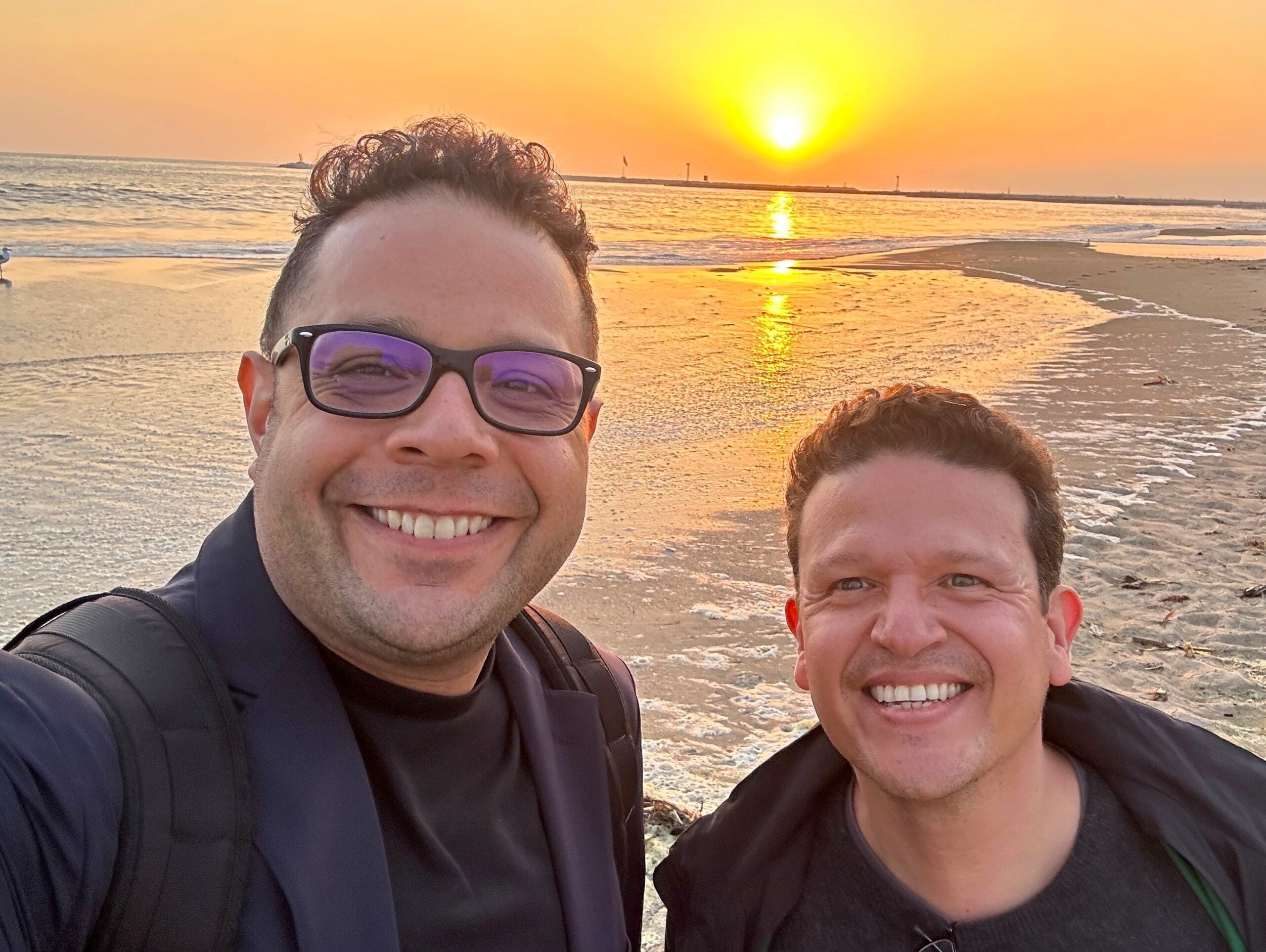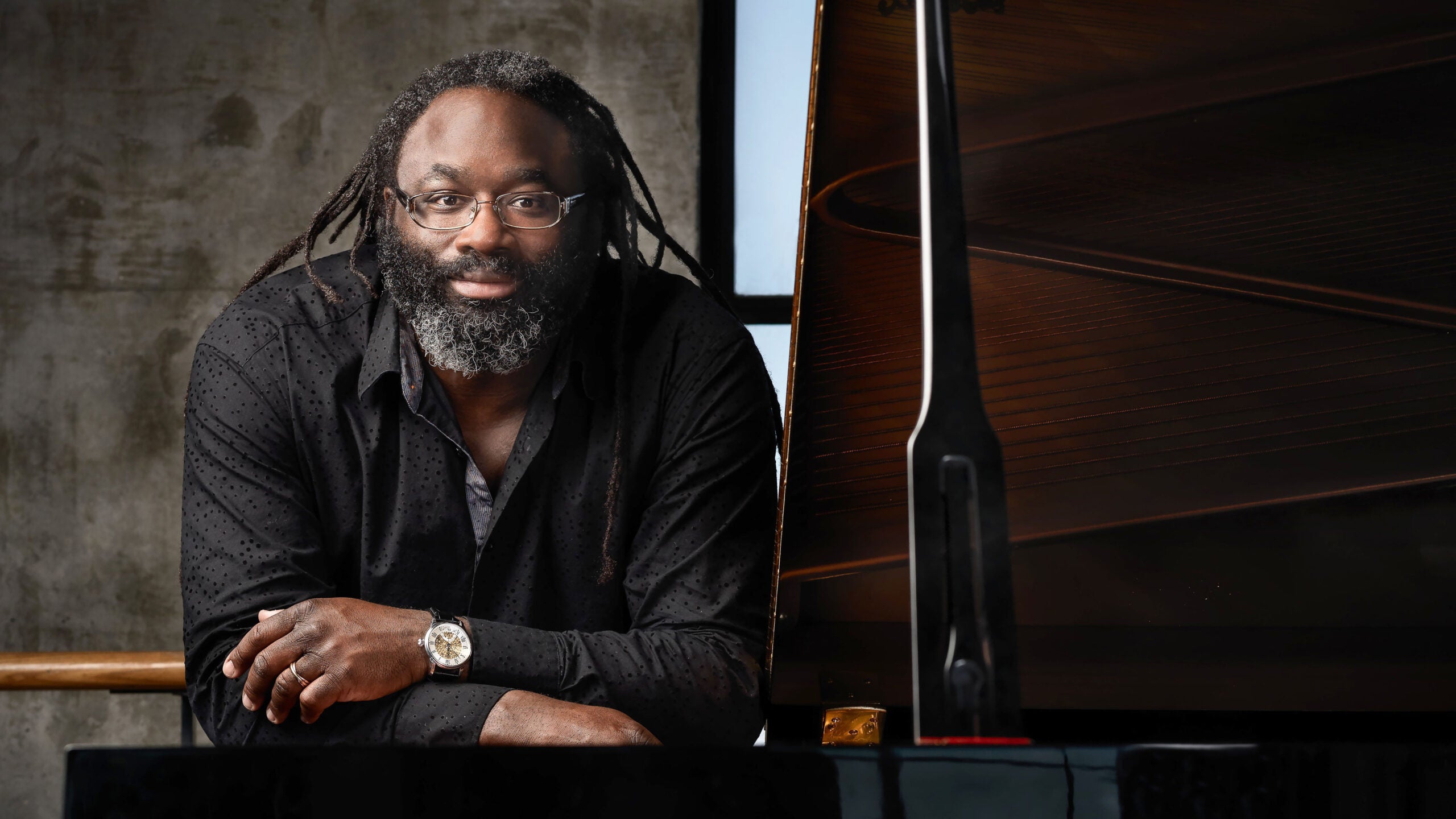Since the pandemic began, I’ve not been going to concerts — as in none since March 2020 — until this year. So far, I’ve dodged the COVID bullet (yes, an outlier), though I’m still squeamish about large crowds. Still, this year I did jump back in the saddle to experience a carefully curated selection of live performances.
Conductor Rafael Payare led the Montreal Symphony Orchestra in a dynamic, youthful account of Mahler’s 5th, while Yuja Wang‘s blur of fingers made for a ripsnorting Bartók Piano Concerto No. 2. To hear flutist Claire Chase and the Helsinki Philharmonic brilliantly navigate the dreamscape sounds of Kaija Saariaho, who suddenly died three weeks after that May performance, now seems like a balm for a deep musical wound. And I’m still a little buzzed from a visit to Cologne, Germany — a modernist music stronghold — to bask in a centennial György Ligeti concert (including Poème symphonique for 100 metronomes), conducted by Matthias Pintscher.
These concerts were among the year’s delights, and while live music is always best, the bulk of my classical music nourishment came, once again, from recordings. Perhaps buoyed by the terrific orchestral concerts I saw, symphonic recordings resonated with me this year, none more so than the kaleidoscopic escapade that is Thomas Adès‘ Dante. Like it’s namesake’s famous 14th century poem, Adès’ 90-minute ballet score guides us down into hell and back up, through purgatory, into paradise — and seemingly beyond, thanks to an astonishing performance by Gustavo Dudamel and the Los Angeles Philharmonic.
Stay informed on the latest news
Sign up for WPR’s email newsletter.
It’s endlessly fascinating to hear how composers choose to wield their symphonic forces. Finnish composer Lotta Wennäkoski, a new discovery for me, displays a bold Van Gogh sensibility for radiant coloration and quirky textures in three rigorously built pieces played by the Finnish Radio Symphony Orchestra. Joan Tower‘s undervalued Concerto for Piano (Homage to Beethoven) received a tremendous reboot at the hands of Marc-André Hamelin, and we now have a fuller picture of Missy Mazzoli the orchestral composer in the album Dark with Excessive Bright, highlighting four harmonically fresh, dramatically charged works.
Aside from the symphonic bonanza, there were heavenly vocals this year. The sunny-voiced tenor Jonathan Tetelman released a resplendent Puccini disc, while the late Jessye Norman‘s discography grew with a three-disc set of previously unreleased recordings, and the French conductor Raphäel Pichon issued a scorching rendition of Monteverdi‘s Vespers of 1610. The new music vocal outfit Roomful of Teeth makes appearances on one of the year’s most satisfying releases, STILLPOINT, marking the studio return, after a 12-year absence, of pianist Awadagin Pratt in six new works for piano.
These albums, and a few more below, were the source of much joy for me in a year when it increasingly seemed in short supply. I hope they provide the same for you.
ThomasAdès
Dante
For Those Who Like: The Divine Comedy, Mahler, roller coasters
The Story: Dante Alighieri’s epic poem La Divina Commedia might be 700 years old, but it’s still inspiring artists today. Dante, an evening-length ballet with Wayne McGregor’s choreography, premiered in 2021 and now receives its recorded debut with Gustavo Dudamel leading the Los Angeles Philharmonic. Adès is our musical tour guide through hell, where we meet a broad spectrum of sinners, from “The Thieves — devoured by reptiles” to the man himself, “Satan — in the lake of ice,” before working our way through Purgatory and then into Paradise.
The Music: The musical acid trip within the “Inferno” is uproariously orchestrated in blinding technicolor. Brass snarls, winds gasp and strings swirl with nods to Liszt, Berlioz and Stravinsky. Still, the rigorously crafted sound world is textbook Adès, and the performance is both meticulous and, well, hell-raising. “Purgatorio” is the polar opposite. Amid the haunting (pre-recorded) chant of a cantor’s morning prayer, the orchestra adopts a Middle Eastern dialect with wheezy contrabassoons and snaky melodies. “Paradiso” is indeed heavenly — and more, a cosmic journey, spiraling ever upward with orchestral colorings and textures that sound truly out of this world.
Awadagin Pratt
STILLPOINT
For Those Who Like: T.S. Eliot, Roomful of Teeth, new piano music
The Story: A young Awadagin Pratt burst on the scene in the 1990s with awards, appearances on Sesame Street and Good Morning America and a big record deal. It’s been 12 years since Pratt released an album, but what a comeback record he’s made. Inspired by a few lines in T.S. Eliot’s Burnt Norton, Pratt handed the text to six composers as a jumping-off point. What he got in return was a startling array of works ranging from solo piano to miniature piano concertos to works with orchestra, piano and voices.
The Music: The six works are as individual as their composers. Jessie Montgomery’s Rounds is a rippling concerto, complete with virtuosic cadenza. Tyshaw Sorey‘s contribution channels Morton Feldman’s austere, quiet canvases, with diaphanous vocals from Roomful of Teeth, who uncannily imitate the bird calls Paola Prestini writes into her Code, which takes further inspiration from Eliot’s love letters. Latvian composer Pēteris Vasks scales down to solo piano and a theme of sacred ecstasy, while Alvin Singelton draws on Bach and jazz. Judd Greenstein’s Still Point, another mini-concerto, is propelled by retro minimalist vocals and sweeping, neo-romantic gestures.
Jonathan Tetelman
The Great Puccini
For Those Who Like: Pavarotti, Italian sunshine, full-throated melody
The Story: Poised to make his highly awaited Metropolitan Opera debut later this season, the rising opera star — and former Manhattan nightclub DJ — Jonathan Tetelman has released a buoyant all-Puccini disc, his second album for the swanky Deutsche Grammophon label. Born in Chile, Tetelman was adopted by American parents who raised him in New Jersey. He studied first as a baritone — evident in the cocoa-colored lower range of his voice — before switching to tenor in grad school.
The Music: Few tenors have as much pure Italian sunshine in their voice as Tetelman does. Reminiscent of Pavarotti at times, but with burgundy-colored timbres, Tetelman shines in this melody-laden smorgasbord of Puccini arias. Yes, there’s the obligatory “Nessun dorma,” where Tetelman produces requisite power and steel, but to hear him sing the more congenial “Parigi! È la città dei desideria,” from the lesser-known La Rondine, is to hear the ardent heart of a young man falling in love with the city of Paris on first sight.
Missy Mazzoli
Dark with Excessive Bright
For Those Who Like: Joan Tower, Bartók, violin concertos
The Story: Lately, composer Missy Mazzoli has made a name for herself in the opera house. Breaking the Waves, from 2016, was a breakthrough critical success. Then came Proving Up and, in 2021, The Listeners, a psychological nail-biter right out of The Twilight Zone. Now she’s working on a commission from the Metropolitan Opera. But what about Missy Mazzoli the orchestral composer? The album Dark with Excessive Bright answers that question in a most gratifying way by devoting itself to four Mazzoli symphonic pieces, proving that she can create shimmering instrumental music with large forces. The Music: Mazzoli admits she’s drawn to “weird harmonies,” but the album is tonal — in a Bartók or Joan Tower kind of way — with notes stacked to produce fresh, often unusual sounds. In the Sinfonia “For Orbiting Spheres,” she deploys harmonicas in three different keys to achieve the effect she describes as “a hurdy-gurdy flung recklessly into space,” while in the title track, a violin concerto, she blends a crepuscular string section with glittering passages for the soloist. And in Orpheus Undone, a work that contemplates the stretching of time, a woodblock keeps a tick-tock beat as strings bend like taffy, rubbing against flurries of warped winds.
Aizuri Quartet
Earthdrawn Skies
For Those Who Like: Sibelius, string quartets, folk dances
The Story: Formed in 2012, the Aizuri Quartet takes its name from a vibrant style of Japanese woodblock printing. They’ve etched similar detail and fresh artistry into their second album, which draws together eight centuries of music. The band has reached for a following far beyond standard classical music borders, opening for Wilco and appearing with the indie rock band on The Late Show with Stephen Colbert. With two brand-new members, it will be curious to see what the versatile quartet comes up with next.
The Music: New music champions, the Azuris also have a keen ear for music that deserves a brighter spotlight. The ear-opening discovery here is the Jamaican-born British composer Eleanor Alberga, now in her 70s, and her searching, sometimes astringent String Quartet No. 1. There’s a wispy arrangement of the 12th century abbess Hildegard von Bingen’s Columba aspexit and the earthy feel of folk songs by the ethnomusicologist Komitas Vardapet. They all stand in the shadow of Jean Sibelius, whose String Quartet in D minor towers over the album like a solitary, snow-draped pine. Subtitled “Voces Intimae” (Intimate Voices), the quartet is a moody self-reflection of the composer’s inward struggles, with a brooding adagio flanked by two scherzo-like flashes of jittery optimism.
Lotta Wennäkoski
Sigla/Flounce/Sedecim
For Those Who Like: Kaija Saariaho, Thomas Adès, Debussy
The Story: While still under the radar here in the U.S., the 53-year-old Finnish composer’s reputation is growing, and this arresting album of orchestral works, which just won a Gramophone Award, should add another boost. Wennäkoski’s breakthrough came in 2017 when her orchestral piece Flounce debuted at London’s famed Last Night of the Proms; it has since received nearly 50 performances. With all the color and alluring textures in her music, it’s not surprising to learn she studied with the late Kaija Saariaho.
The Music: While Flounce is pure symphonic flamboyance, with its madly fluttering winds, sonic booms and buzzing strings, the three-paneled Sedecim shows a darker, subtler side of Wennäkoski’s orchestral prowess. In the central section, we’re whisked to the battlefields of WWI in a nightmarish collection of splintered sounds. Sigla, her harp concerto, feels like a ballet of swirling color, tamed by a central slow, ghostly movement. Wennäkoski told the BBC that her music should have “a feeling of air, space and clarity,” and with these agile, detailed performances by the Finnish Radio Symphony Orchestra, harpist Sivan Magan and conductor Nicholas Collon, she’s gotten her wish.
Jessye Norman
The Unreleased Masters
For Those Who Like: musical mementos, Strauss’ Four Last Songs, soaring sopranos
The Story: For complex reasons — some now half-forgotten to the mists of time — Jessye Norman, before her sudden death in 2019, refused to release the music on this three-CD set, recorded between 1989 and 1998. Still, with a view to benefiting her posthumous philanthropic endeavors, Norman’s family gave the green light. And aren’t we lucky! The great soprano is in fine, often pristine voice throughout, and the repertoire — from Haydn and Berlioz to Wagner and Britten — is especially wide-ranging. Of chief interest is an hour’s worth of excerpts from Wagner’s Tristan und Isolde, a role tailor-made for Norman’s voice, yet one she never sang on stage or recorded in full.
The Music: An unexpected trove for Norman fanatics, the Tristan excerpts prove she had the character deep within her. And for those who cherish her luxurious 1982 studio recording of Four Last Songs by Strauss, here’s another one, recorded live seven years later in a glorious, slightly swifter performance with the voice placed more forward in the mix. It was to be coupled with Wagner’s Wesendonck Lieder, which appears here as a master class in opulence and breath control. Berlioz’s La mort de Cléopâtre, Haydn’s Scena di Berenice and Britten’s Phaedra were slated for a “three queens” concept album; Norman nixed the original mix, so it’s been reworked for this release. It’s all another example of the soprano’s insightful singing and keen ear for programming.
Arvo Pärt
Tractus
For Those Who Like: Brian Eno’s ambient music, choral singing, peaceful blood pressure
The Story: Tõnu Kaljuste has been conducting performances of Arvo Pärt’s music with these forces (the Tallin Chamber Orchestra and the Estonian Philharmonic Chamber Choir) for three decades. For Tractus, he’s handpicked a group of works by the composer that have the uncanny power to comfort and assuage. (It actually lowers my blood pressure. I’ve measured.) And given the violent state of our world these days, the album couldn’t come at a better time. That the pieces are all sacred matters little. Religious or not, you can feel the effects of music that is not just pretty, but rigorously constructed for heart and head.
The Music: Halfway through the opening track, Littlemore Tractus, something remarkable happens — the chorus finally takes flight, blossoming into pure sunlight. In this instance and many others throughout the album, you can witness the mysterious power of music to defy description in words. Like the warm blanket of strings that caresses you in the 7th of the Greater Antiphons, the dusky light that pokes through in Veni creator, the slightly unsettling thunder of the bass drum in These Words and the lullaby of innocence that closes the album, you just feel it.
Joan Tower
Concerto for Piano (Homage to Beethoven)
For Those Who Like: Missy Mazzoli, Beethoven, muscular music
The Story: Joan Tower is one of the most self-effacing artists, yet other leading composers like Julia Wolfe, Missy Mazzoli and Tania León look up to her with reverence. Tower blazed a path in American music, from humble beginnings when she doubted her ability to nationwide visibility with Made in America, an orchestral work performed in all 50 states. Now 85, Tower could rest on her achievements, but she’s still fulfilling commissions with her singular, sturdy music. This album from the dependable Boston Modern Orchestra Project, an orchestra devoted to contemporary music, spotlights four terrific concertos with expert soloists.
The Music: When Tower began writing her piano concerto in 1985, she experienced something supernatural. Her favorite composer, Beethoven, she says, entered the room and a conversation ensued. Tower ended up embedding fragments of three Beethoven piano sonatas within her muscular concerto, played here with characteristic élan by Marc-André Hamelin. The two concertos for flute were both written for the soloist on the album, Carol Wincenc. The Flute Concerto gives Wincenc a roller coaster workout up and down the registers, while Rising is obsessed with musical figures that journey upwards. In Red Maple, Tower’s attractive bassoon concerto, the soloist Adrian Morejon is accompanied by strings only in order to let his low-voiced, soft-spoken instrument sing sweetly.
Raphaël Pichon
Monteverdi: Vespers of 1610
For Those Who Like: early music, choral opulence, party atmospheres
The Story: Claudio Monteverdi (1567-1643) was hands-down the most innovative Italian composer of his generation — a pioneer of opera and one who creatively pushed old forms past their limits and designed new styles of musical expression. The exact purpose of his Vespro della Beata Vergine da concerto (Vespers of 1610, for short) is routinely debated. Some look at the dozen or so varied pieces as a kind of portfolio of old and new approaches to church music. But conductor Raphaël Pichon believes it’s a single work containing the intensity of a pilgrimage, and his white-hot performance unfurls in colorful operatic pageantry.
The Music: If you thought early music was dull, you must hear this. Pichon and his group of 73 singers and players, called Pygmalion, treat the Vespers like “the theater of life,” as he puts it. And anywhere you drop the needle, this performance sparkles. Try the opening brass fanfares and chorus that explode out of a single chanted line, or the luminous interleaving of three exceptional tenor soloists in the “Duo Seraphim.” The choral singing is particularly strong throughout, but sample the whispered opening to “Dixit Dominus” or the creamy layering of voices in “Ave maris stella.” The instrumental performances rock, too — in “Fecit potentiam,” recorder soloists shred it up while a mezzo-soprano soars confidently above. This is a recording for the ages.
9(MDAyMjQ1NTA4MDEyMjU5MTk3OTdlZmMzMQ004))
© Copyright 2025 by NPR. To see more, visit https://www.npr.org.9(MDAyMjQ1NTA4MDEyMjU5MTk3OTdlZmMzMQ004))
